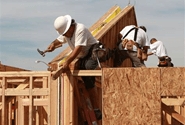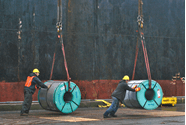Steel Markets

Housing Data Plummets in April, But HMI Shows Market Confidence
Written by Sandy Williams
May 19, 2020
Housing starts plummeted 30.2 percent in April compared to March, falling to a seasonally adjusted annual rate of 891,000 and the lowest level since 2015. Compared to April 2019, starts tumbled 27.9 percent, said the U.S. Census Bureau and the Department of Housing and Urban Development.
Building permit authorizations were at a SAAR of 1,074,000, a 20.8 percent decline from March and 19.2 percent below the year-ago rate.
“Housing starts retreated in April due to the economic consequences of government-imposed lockdowns associated with virus mitigation,” said Robert Dietz, chief economist at the National Association of Home Builders.
Single-family starts dropped 25.4 percent in April while permits fell 19.2 percent. Starts for housing of five units or more plunged 40.3 percent and permits 12.4 percent. Housing start declines were present across all four regions, falling the greatest in the Northeast (66 percent) and the West (42 percent).
Home construction was designated as an essential business by most states during the crisis, but supply disruptions impacted building activity.
“The designation of home construction as an essential business during the crisis helped keep most residential construction workers on the job, which is reflected in the May HMI,” said Dietz.
The May Home Builders/Wells Fargo Housing Market Index (HMI) indicated a renewed confidence by builders that the housing market was stabilizing and moving forward as the nation reopens from COVID-19 shutdowns. The HMI increased seven points to 37 in May, following a record monthly decline in April.
A number of measures were taken to ensure that buyers have access to information about new housing, including virtual tours and online closings. Low interest rates and recent increases in mortgage applications indicate buyer demand is improving, said Dietz.
“However, high unemployment and supply-side challenges including builder loan access and building material availability are near-term limiting factors,” he added.
NAHB is forecasting that multi-family construction will decline more than single-family construction during this recession.

Sandy Williams
Read more from Sandy WilliamsLatest in Steel Markets

CRU: Sheet import demand softens as domestic price gains have slowed
US domestic sheet price gains have begun to slow as previously pulled-forward demand has led to a decline in orders.

CMC looks beyond Arizona micro-mill woes to long-term viability of construction mart
Despite the economic and geopolitical upheaval of the last five years, CMC President and CEO Peter Matt points out that the construction market has been an essential element of the way forward.

US importers face stricter rules under revamped S232 tariffs
“CBP expects full compliance from the trade community for accurate reporting and payment of the additional duties. CBP will take enforcement action on non-compliance," the agency said in a March 7 bulletin.

Steel exports rebound in January
US steel exports recovered to a five-month high in January after having fallen to a two-year low in December. This growth follows four consecutive months of declining exports.

Construction spending drops marginally in January
Construction spending edged down slightly in January, slipping for the first time in four months. The US Census Bureau estimated spending at a seasonally adjusted annual rate of $2,196 billion in January, down 0.2% from December’s downward revised rate. The January figure is 3.3% higher than a year ago. January’s result, despite the slight erosion, […]
